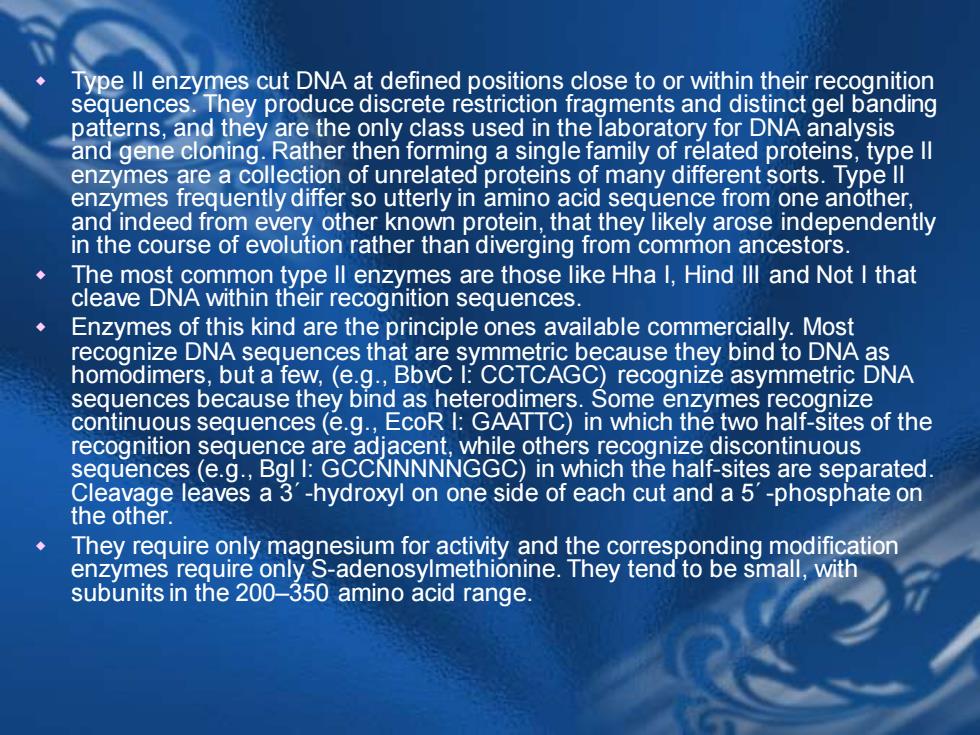正在加载图片...

Type II enzymes cut DNA at defined positions close to or within their recognition sequences. They produce discrete restriction fragments and distinct gel banding patterns, and they are the only class used in the laboratory for DNA analysis and gene cloning. Rather then forming a single family of related proteins, type II enzymes are a collection of unrelated proteins of many different sorts. Type II enzymes frequently differ so utterly in amino acid sequence from one another, and indeed from every other known protein, that they likely arose independently in the course of evolution rather than diverging from common ancestors. The most common type II enzymes are those like Hha I, Hind III and Not I that cleave DNA within their recognition sequences. Enzymes of this kind are the principle ones available commercially. Most recognize DNA sequences that are symmetric because they bind to DNA as homodimers, but a few, (e.g., BbvC I: CCTCAGC) recognize asymmetric DNA sequences because they bind as heterodimers. Some enzymes recognize continuous sequences (e.g., EcoR I: GAATTC) in which the two half-sites of the recognition sequence are adjacent, while others recognize discontinuous sequences (e.g., Bgl I: GCCNNNNNGGC) in which the half-sites are separated. Cleavage leaves a 3´-hydroxyl on one side of each cut and a 5´-phosphate on the other. They require only magnesium for activity and the corresponding modification enzymes require only S-adenosylmethionine. They tend to be small, with subunits in the 200–350 amino acid range. Type II enzymes cut DNA at defined positions close to or within their recognition sequences. They produce discrete restriction fragments and distinct gel banding patterns, and they are the only class used in the laboratory for DNA analysis and gene cloning. Rather then forming a single family of related proteins, type II enzymes are a collection of unrelated proteins of many different sorts. Type II enzymes frequently differ so utterly in amino acid sequence from one another, and indeed from every other known protein, that they likely arose independently in the course of evolution rather than diverging from common ancestors. The most common type II enzymes are those like Hha I, Hind III and Not I that cleave DNA within their recognition sequences. Enzymes of this kind are the principle ones available commercially. Most recognize DNA sequences that are symmetric because they bind to DNA as homodimers, but a few, (e.g., BbvC I: CCTCAGC) recognize asymmetric DNA sequences because they bind as heterodimers. Some enzymes recognize continuous sequences (e.g., EcoR I: GAATTC) in which the two half-sites of the recognition sequence are adjacent, while others recognize discontinuous sequences (e.g., Bgl I: GCCNNNNNGGC) in which the half-sites are separated. Cleavage leaves a 3´-hydroxyl on one side of each cut and a 5´-phosphate on the other. They require only magnesium for activity and the corresponding modification enzymes require only S-adenosylmethionine. They tend to be small, with subunits in the 200–350 amino acid range